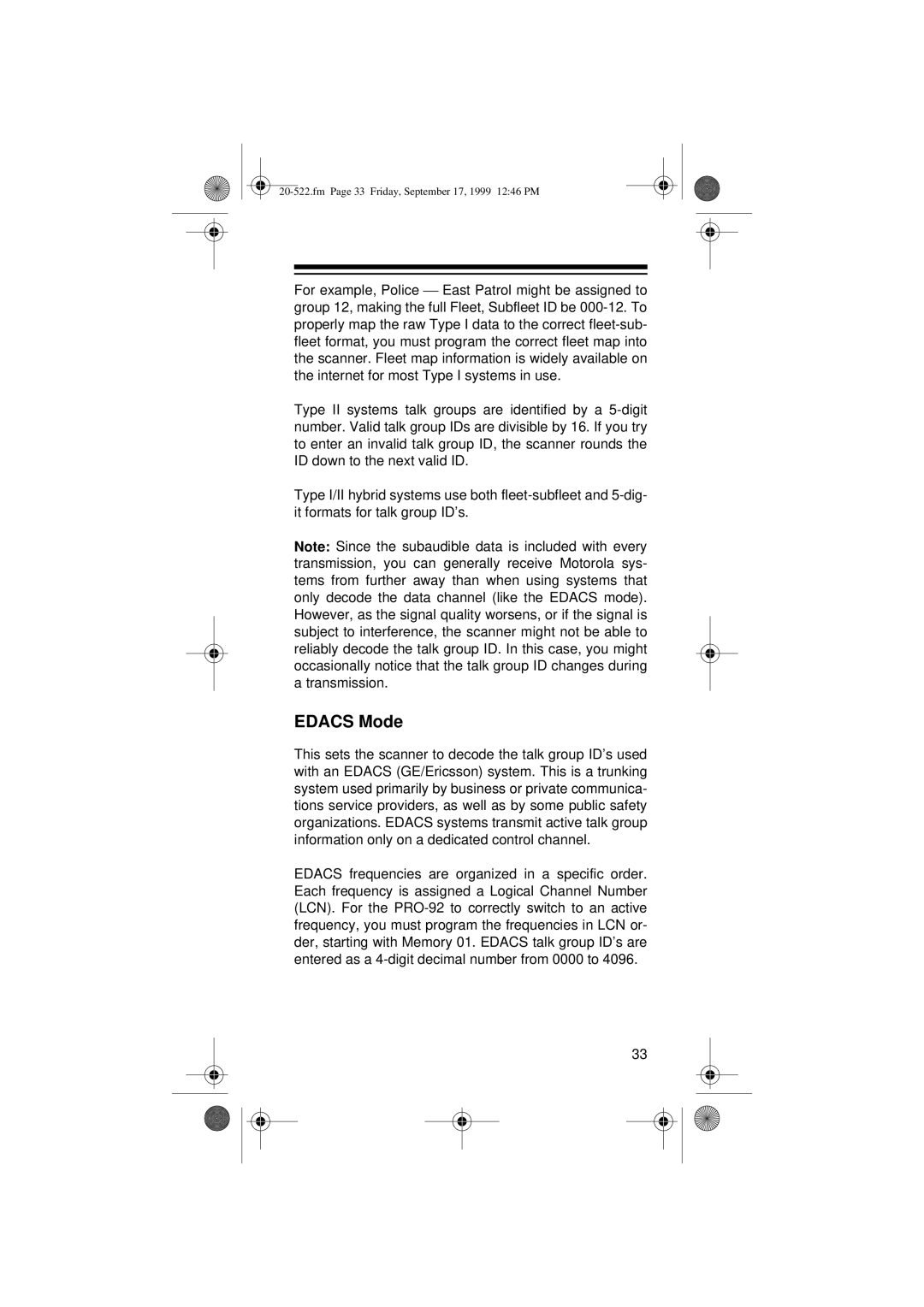
For example, Police East Patrol might be assigned to group 12, making the full Fleet, Subfleet ID be
Type II systems talk groups are identified by a
Type I/II hybrid systems use both
Note: Since the subaudible data is included with every transmission, you can generally receive Motorola sys- tems from further away than when using systems that only decode the data channel (like the EDACS mode). However, as the signal quality worsens, or if the signal is subject to interference, the scanner might not be able to reliably decode the talk group ID. In this case, you might occasionally notice that the talk group ID changes during a transmission.
EDACS Mode
This sets the scanner to decode the talk group ID’s used with an EDACS (GE/Ericsson) system. This is a trunking system used primarily by business or private communica- tions service providers, as well as by some public safety organizations. EDACS systems transmit active talk group information only on a dedicated control channel.
EDACS frequencies are organized in a specific order. Each frequency is assigned a Logical Channel Number (LCN). For the
33
